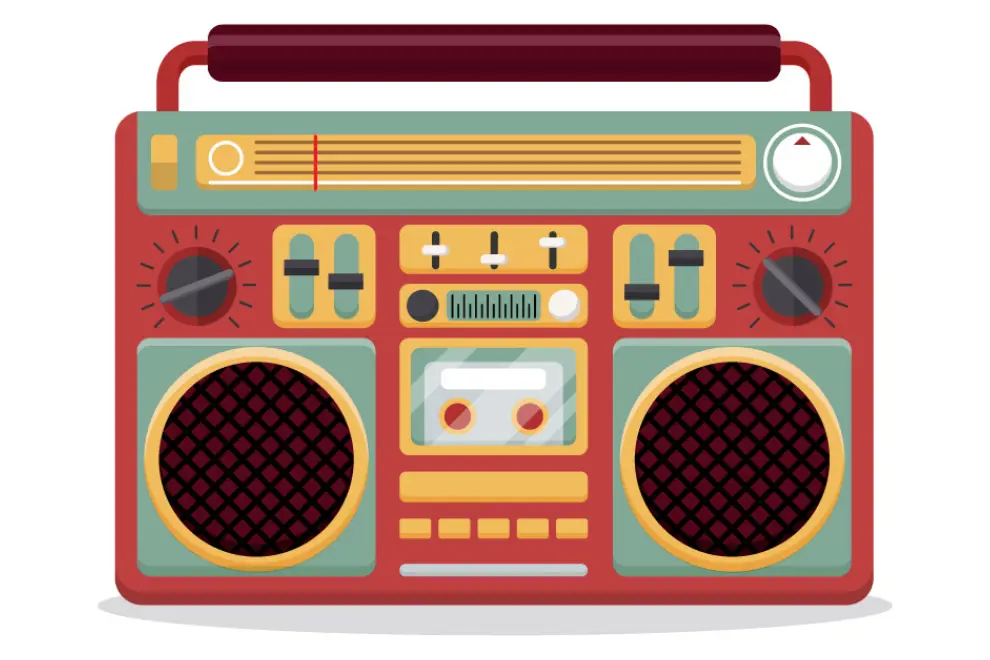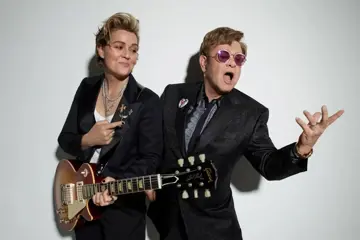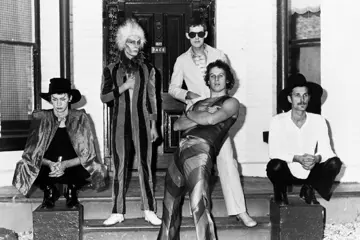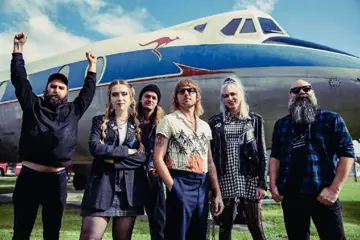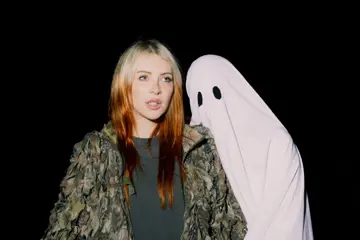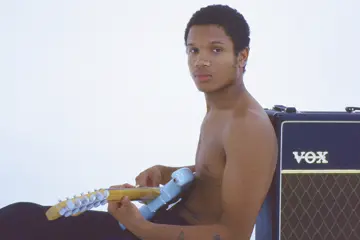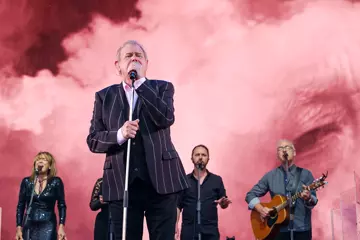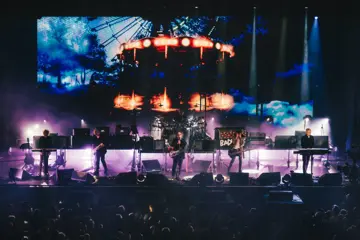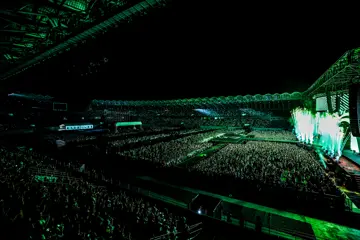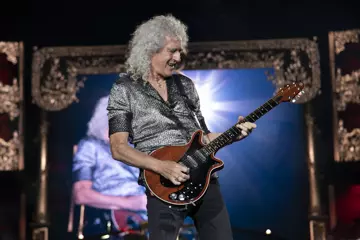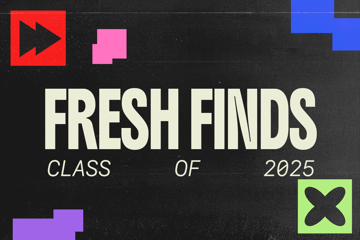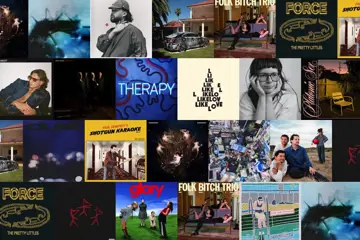While streaming services pile on features to keep exciting their predominantly Gen Z audiences, commercial radio is debating how to get that elusive age group more on board.
The stereotype about Gen Z-ers and commercial radio, both in Australia and globally, is that they consider streaming sexier and that the battle may be lost. Have radio programmers overlooked them to such an extent that they no longer see the medium as a place to discover new music and be part of a community?
According to Emily Copeland formerly of the Australian Radio Network’s youth orientated R&B and hip-hop platform CADA, and ARN’s Director of Audience Innovation and Music Partnerships: “18-to-29-year-olds are a lucrative audience, however, they’re portrayed as hard to reach, with a perception they’re always on their phones and avoid traditional media. But interestingly, the time they’re on their phones is spent seeking out connection and multi-platform content from people who look and sound like them.”
Two recent surveys had conflicting data on the listening habits of those Australian radio consumers born between 1997 and 2012. Commercial radio’s first GfK ratings of 2024 showed more people tuning in, and a “promising growth in younger audiences” to 2.8 million. But numbers from the Australian Communications and Media Authority (ACMA) suggested a decline in Australians of all ages in listening to and owning radio devices.
Strategies For Gen Z
At last month’s Radiodays Europe (RDE) conference in Munich, when radio executives met to discuss opportunities and challenges, it was inevitable that the topic of Gen Z came up.
Don't miss a beat with our FREE daily newsletter
Some continued to put Gen Z-ers in the too-hard basket who were beyond redemption. Others saw the need to cultivate long-term younger audiences to build deeper connections and keep radio relevant. “Radio is becoming for parents and grandparents,” warned one. “We need to invite youth to come back to radio.”
There was even talk about reaching out to Generation Alpha (under 14s) which has an even smaller attention span than Gen Z. Some children’s radio stations have been set up in Europe to entice them from getting their entertainment just from smartphones.
Two successful examples of engaging with Gen Z were presented at the conference. One was from right here in Australia. It is the hip-hop and R&B multi-platform CADA, which the Australian Radio Network set up two years ago as a rebrand of its urban Edge Radio. CADA encompasses broadcast audio, podcast, video, digital and social. It covers the iHeartRadio app, FM in Western Sydney and Katoomba, DAB+ nationally, as well as Instagram, TikTok, YouTube and cada.com.au.
According to ARN, the first two months of CADA saw web traffic up over 30 percent, a 12 percent growth in Instagram followers, plus 550,000 views of CADA content on YouTube. This was attributed to giving Gen Z what it wants – inclusive, exclusive and up-to-date hip-hop and R&B content that spans multiple touch-points.
At RDE, Emily Copeland explained how the research it conducted was used to shape CADA. It found Gen Z is continually searching for content. It hates ads but not advertising. It enjoys live radio because it allows it to participate. It trusts content creators and influencers more than radio identities.
As a result, CADA presenters at launch included musicians, content creators and DJs, fashion designers, chefs and comedians who had a social media presence and following. They did not have to have a radio background. 60 percent were females and 80 percent were non-anglos. Its ads are integrated within the multi-platforms. For instance, for Red Bull’s 64 BARS campaign, they worked on an exclusive track launch and artist interview, integrated on-air spots and deep editorial and social drivers.
The GfK survey last spring showed CADA with 150,000-plus listeners in Sydney, 40,000 in Melbourne, 16,000 in Brisbane, 8,000 in Adelaide and 4,000 in Perth.
England’s BBC Radio 1 is another success story which caters for Gen Z tastes. Its head, Aled Haydn Jones, said, “If you work in broadcast medium, you try and reach everyone – and you don’t stand for anyone in particular. You can get away with it when you’re a genre-based or mood-based station, But when it’s just for the young, some attributes are important. They want to hear themselves reflected back at them. Even if you’re five years out, and you’re talking to a mid-20s and late 20s audience, they’ll say, ‘This is not for me’ and they disconnect.”
It is important to offer personalisation because this demo grew up on curated playlists, and to play to the companionship live radio gives them. Also significant, Jones said, was that within the 18-to-24 group are school students, college students, workers and single parents. They have varying tastes in their daily four hours tuning in.
“You’ll get streamers who can have a track on repeat for hours because that’s what they want, or people who want to deep-dive into a genre or artist, or a mass audience that just want companionship through the music, whether it's uptempo, dance, chill out or hits of today.”
Rather than use the BBC’s social media channels, Radio 1 presenters set up their own, strongly used music, film and TV celebrities who came on to be interviewed to use their own socials to promote the station.
In a blog last month, US media analyst Dave Van Dyke of Bridge Ratings Media Research suggested other ways to attract Gen Z to radio. This would be getting listeners to advice on air young emerging acts how to remix their tracks, or have listeners themselves do remixes that would be played during prime-time.
One idea was weekly retro shows covering music, film and pop culture, and listeners ringing in with their favourite devices of that time. Quirky interviews with street performers and live beatboxing battles were more options.
To test their tech savvy minds, music could be used as soundtracks as they create virtual reality scenarios of future cities and events, solve puzzles and codes, and late-night shows where live sounds from the city—traffic, rain, laughter—are combined with ambient music.
Aussie Data On Radio
The first GfK ratings of 2024 showed that a record 82 percent (12.26 million) were tuning in to commercial radio after a jump of 72,000 new listeners (or 0.6 percent). There was a “promising growth in younger audiences”, with a 1.3 percent jump in the number of listeners aged ten-to-24 to 2.8 million. This was attributed to a rise in popularity of DAB+ radio and streaming technology.
“Audiences are continuing to explore their digital options, with 3.2 million people aged 10 and over listening to commercial radio via streaming, and 4.7 million listening to commercial radio on a DAB device,” Commercial Radio & Audio (CRA) CEO Ford Ennals said.
Commercial DAB+ stations also saw growth in younger audiences, with listeners aged 10-to-24 up by five percent to 899,000. Figures released in December 2023 by ACMA stated that 18-to-34 year olds were the highest consumers of online audio. But as of June 2023, Australians spent less time listening to radio. Those aged 18-to-24 listened for 1.4 hours with the 25-to-34s listening for 3.5 hours.
ACMA’s figures showed a general drift from radio listening across the board. As of June 2023, 70 percent of Australians of all ages listened to music via a streaming service, 56 percent listened to FM radio, and nine percent listened to radio via the internet or an app.
Australians were listening less to radio (from 75 percent in 2022 to 69 percent), less to FM radio (from 60 percent to 56 percent), and less to AM radio (from 26 percent to 23 percent), while DAB (digital radio) remained steady at 13 percent.
Ownership of a radio also decreased in 2023, ACMA reported. “89 percent of Australians had a radio at home or in their car, compared to 92 percent in 2022. Less than half of Australians own a radio at home (44 percent, down from 53 percent).”
Listening to online music streaming services saw a drift towards doing it in the car (now 78 percent from 74 percent in 2022) than at home (now 78 percent from 82 percent). Listeners of FM radio (94 percent), AM radio (89 percent) and DAB+ (70 percent) were most likely to do so in a car than anywhere else.
In a deeper dive, YourGov in early March found Australians are not dial surfers. Six in ten listen to the same station. Within the month during its survey, 16 percent of the audience went to ABC NewsRadio followed by Triple M (13 percent), triple j (12 percent) and NOVA (11 percent).
Significantly, 24 percent agreed online radio totally changed how they see radio. Men are more likely than women (30 percent vs. 19 percent) to agree with this view.
Why Gen Z Keeps Drooling Over Streaming
While radio might find ways to reach Gen Z, music streaming continues to entice and exhilarate.
The London-based International Federation of the Phonographic Industry (IFPI)’s new Engaging With Music report showed audio streaming still with the lion’s share of listening in 2023, with 32 percent, followed by 31 percent for video streaming including YouTube and TikTok. Radio’s share, according to the IFPI, was just 17 percent, followed by nine percent in purchased music, four percent in live music and seven percent in other forms.
Streaming services continue to expand users. London-based MIDiA Research reported (March 18) that global recorded music revenues grew 9.8 percent in 2023 to US$35.1 billion while streaming revenues rose 9.6 percent to $21.9 billion.
Meanwhile the Australian Recording Industry Association (ARIA) reported on March 22 that while the Aussie recorded music market’s wholesale revenue climbed ten percent to $676 million, streaming’s growth rate was greater. It was up 13.86 percent to more than $467 million. Revenue generated by ad-supported models expanded 15.25 percent to $68 million. Video streaming platforms contributed north of $62 million in 2023, up 3 percent.
There were a number of reasons for this rise in engagement. The blend of streaming and social media, aka “social streaming”, allows streamers to share playlists, keep up with what their friends are listening to, and collaborate with others on creating music.
Last week, Spotify and Universal Music Group expanded their partnership by “further amplifying music discovery and social interaction and enhance fan experiences across the platform for UMG’s family of artists and songwriters”. There was precious little detail in their announcement but these will be unveiled down the track.
Through 2024, the game-changing super fan model will give more power to fans. Financial giant Goldman Sachs estimates the monetisation of superfans could add a further US$2 billion in revenue for streaming platforms by 2027 and $4 billion by 2030, representing a 16 percent boost to paid streaming revenues.
Greater personalisation and use of artificial intelligence algorithms to sharpen song recommendations, are considered cornerstones to Gen Z loyalty. In latest moves, Spotify uses an AI DJ to bring global music trends to the user. Meanwhile, YouTube Music allows users to create their own radio stations based on the artists they love.
Other slamming features are AR and VR technologies with concerts and new metaverses as Beat Galaxy and Nitewave, Web3 and its wider use of non-fungible tokens (NFTs), and expanded use of lossless music streaming and hi-res audio that give more users a better listening experience.
Aussie Streaming Figures
ACMA reported in December 2023 that after several years of growth, Australian adults’ streaming of music stabilised with 70 percent listening in both June 2022 and June 2023.
Streamers were more likely to be aged under 25 (94 percent) while the over-25s made up 67 percent. Females had the edge in use, with 71 percent compared to men (67 percent) and living in a metro area than a regional (71 to 67 percent).
Spotify remained the most used service at 62 percent, with 78 percent of its listeners aged 18-to-24 and 69 percent in the 25-to-34 group. They were also more likely to be female (68 percent) than male (56 percent). Males were more likely to head to YouTube Music (31 percent versus 24 percent females), ABC Listen (11 percent vs. seven percent) and SoundCloud (five percent vs. two percent).
Spotify also remained the most popular for podcasts and other audio content, used by 26 percent of adults. On average, Australians spend 5.6 hours a week listening to podcasts, 71 percent at homes, 64 percent in cars and 36 percent on public transport.

